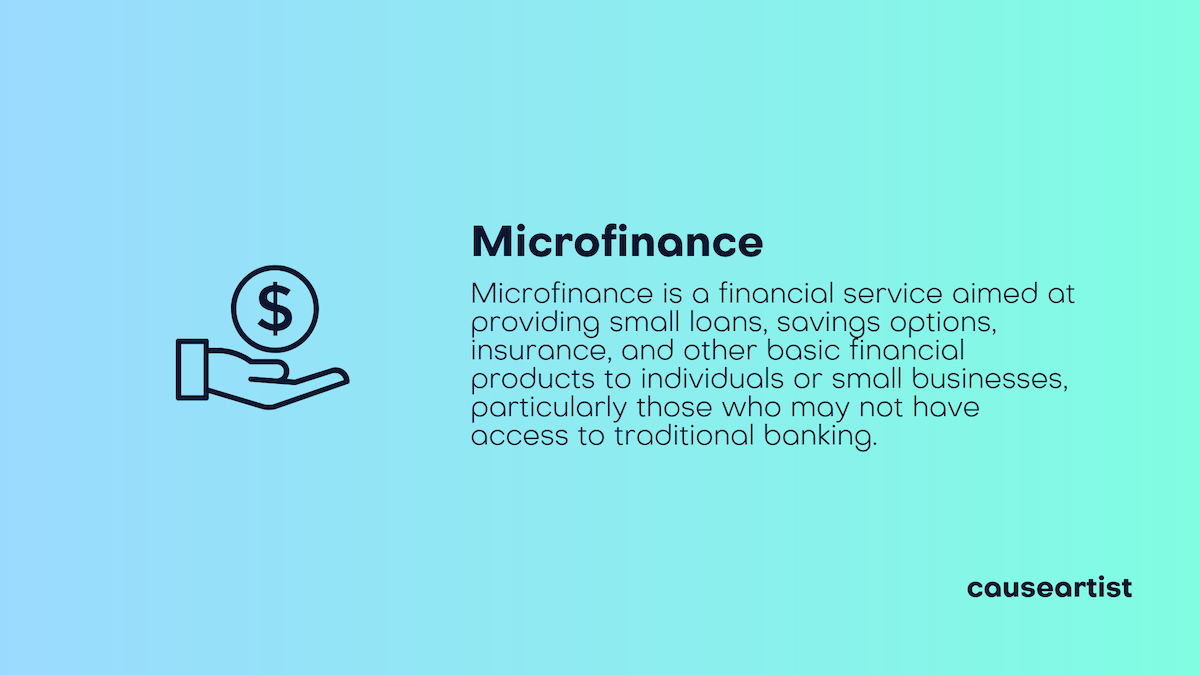Microfinance is a financial service aimed at providing small loans, savings options, insurance, and other basic financial products to individuals or small businesses, particularly those who may not have access to traditional banking.
It’s especially impactful for low-income individuals, rural communities, and budding entrepreneurs in developing regions, who often struggle to secure loans or credit due to lack of collateral, credit history, or stable employment.
Understanding Microfinance: The Basics
Microfinance institutions (MFIs) offer various financial products to meet the needs of underbanked populations. These products typically include:
- Microloans: Small loans, often ranging from as low as $100 to a few thousand dollars, intended to support micro-entrepreneurs or small business owners to grow their businesses, buy equipment, or manage daily expenses.
- Micro-Savings Accounts: Many MFIs provide low-fee or no-fee savings accounts to promote financial inclusion and allow people to save small amounts regularly.
- Micro-Insurance: Insurance plans designed to cover health, life, crop damage, or other risks, tailored to be affordable and accessible to low-income individuals.
- Financial Education: Many MFIs provide training on budgeting, saving, and business planning, helping borrowers make better financial decisions.

Objectives of Microfinance
The core purpose of microfinance is to combat poverty by empowering people to be self-reliant. With access to credit and other financial tools, individuals can develop their small businesses, improve their standard of living, and achieve financial independence.
By serving those traditionally excluded from the formal financial sector, microfinance contributes to financial inclusion and promotes economic growth at the grassroots level.
Benefits of Microfinance
- Economic Empowerment: Microfinance provides a pathway for people to increase their income, which has positive ripple effects on health, education, and overall well-being.
- Increased Employment Opportunities: By enabling small businesses to grow, microfinance helps create local jobs and reduce dependency on external sources.
- Community Development: The funds typically stay within the community, supporting local businesses and fostering community-wide economic growth.
- Enhanced Financial Literacy: Many MFIs educate clients on financial management, which can improve their decision-making and help them avoid debt cycles.
Examples of Microfinance Success Stories
Grameen Bank (Bangladesh)
- Overview: Founded by Nobel Peace Prize laureate Muhammad Yunus in 1983, Grameen Bank pioneered microcredit by providing small loans to impoverished women in rural Bangladesh.
- Impact: By offering microloans without collateral, Grameen Bank has empowered millions of women to start small businesses, supporting entire families and local economies. With a repayment rate above 95%, it has demonstrated that low-income individuals can be reliable borrowers.
- Success Story: Many women have been able to lift themselves and their families out of poverty, gaining financial independence and achieving greater social standing within their communities.
Kiva (Global)
- Overview: Kiva is a nonprofit platform that enables people to lend as little as $25 to low-income entrepreneurs worldwide through a crowdfunding model. It operates in over 80 countries, partnering with local microfinance institutions to distribute funds.
- Impact: With more than $1.5 billion in loans disbursed since its inception, Kiva has enabled thousands of small entrepreneurs to fund projects in agriculture, retail, education, and more.
- Success Story: Kiva has helped countless entrepreneurs achieve their goals, including farmers in Africa who have been able to purchase seeds and equipment, expanding their operations and securing a more stable income.
Microfinance Challenges
While microfinance has clear benefits, it faces challenges as well. High-interest rates, often a necessity due to small loan sizes and the administrative costs of servicing them, can be difficult for borrowers.
Additionally, the risk of over-indebtedness exists when individuals take on multiple loans, sometimes from different lenders, without the capacity to repay them.
The Future of Microfinance
With advancements in digital technology, the microfinance sector is evolving. Mobile banking and digital wallets are helping MFIs reach even the most remote areas, reducing the operational costs and expanding the reach of microfinance services.
Furthermore, new models like crowdfunding platforms and peer-to-peer lending are opening up microfinance to broader investment sources, creating sustainable options for scaling these services globally.
Microfinance has proven to be a powerful tool for financial inclusion and economic growth, especially in underbanked and impoverished regions. While there are challenges to address, the continued evolution of this sector holds promise for creating a more inclusive financial landscape.







